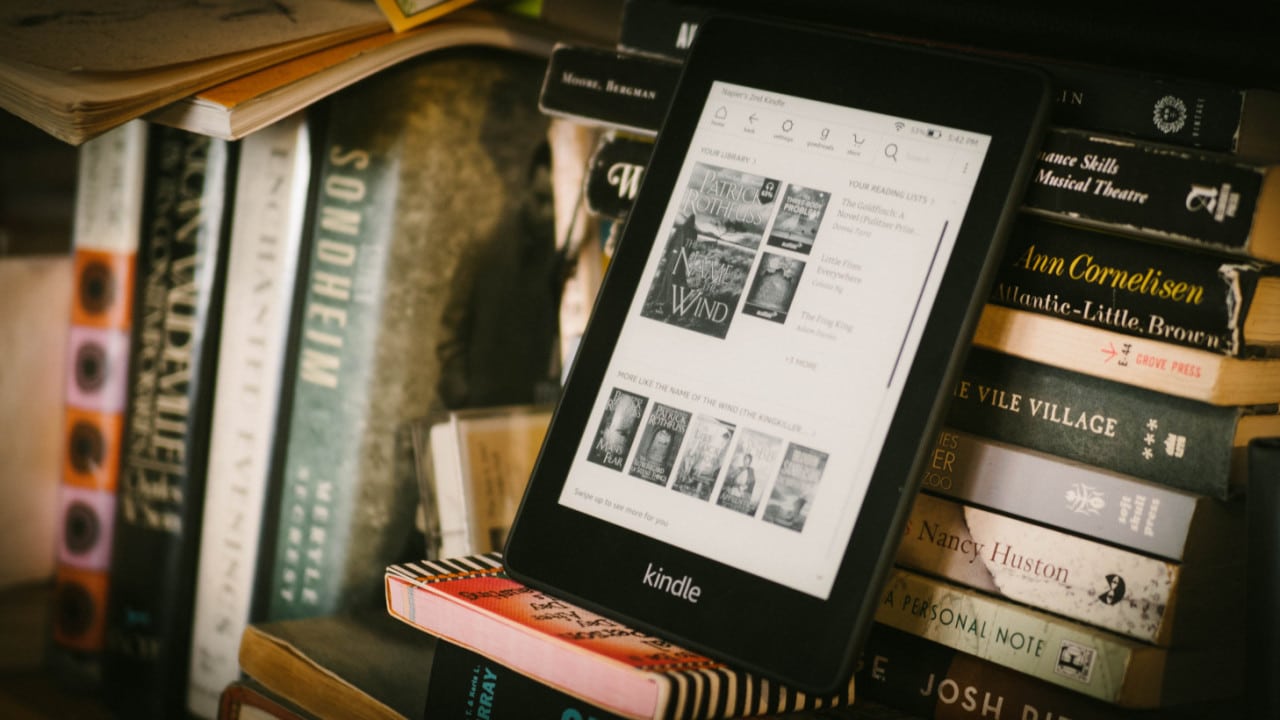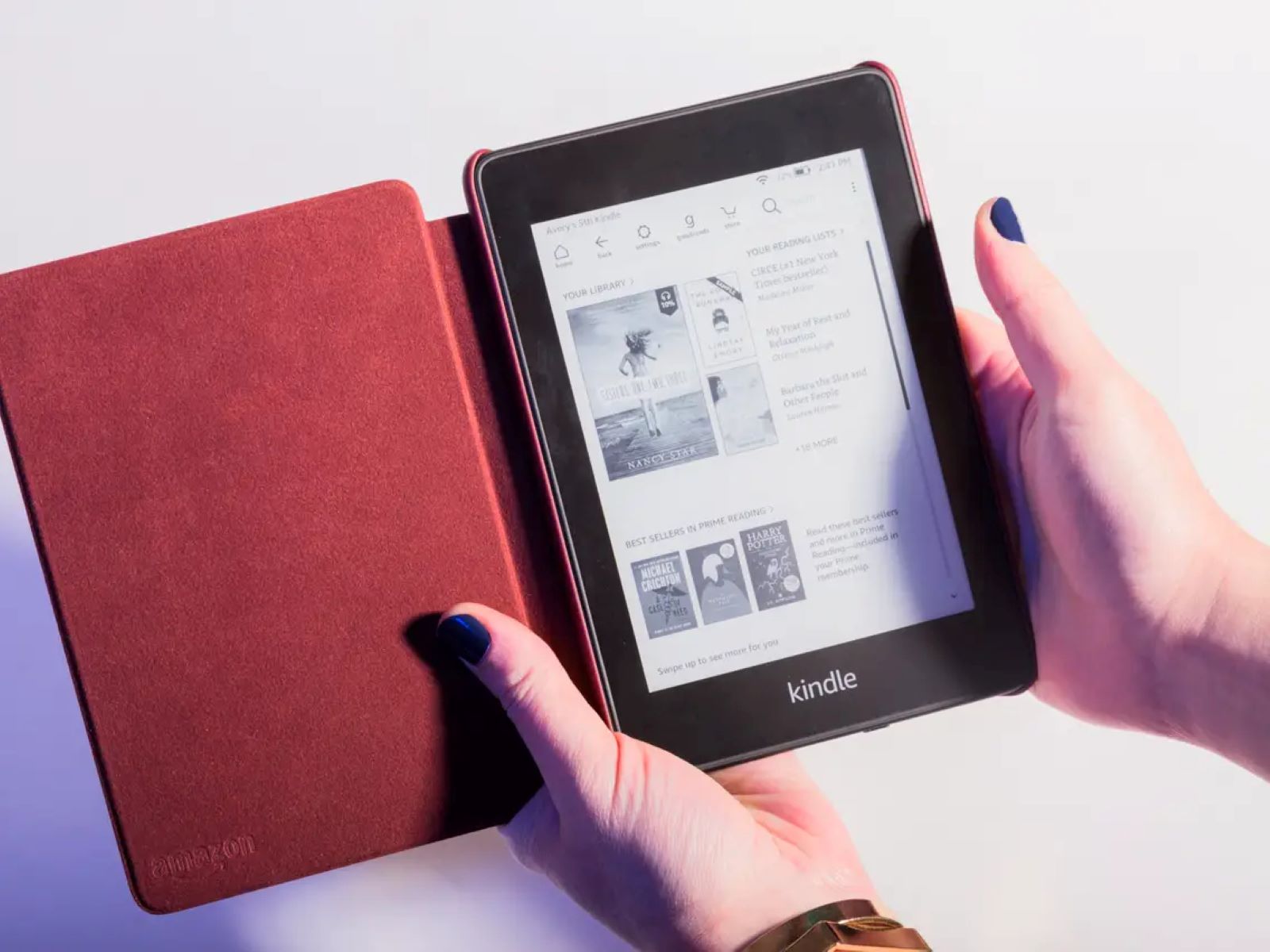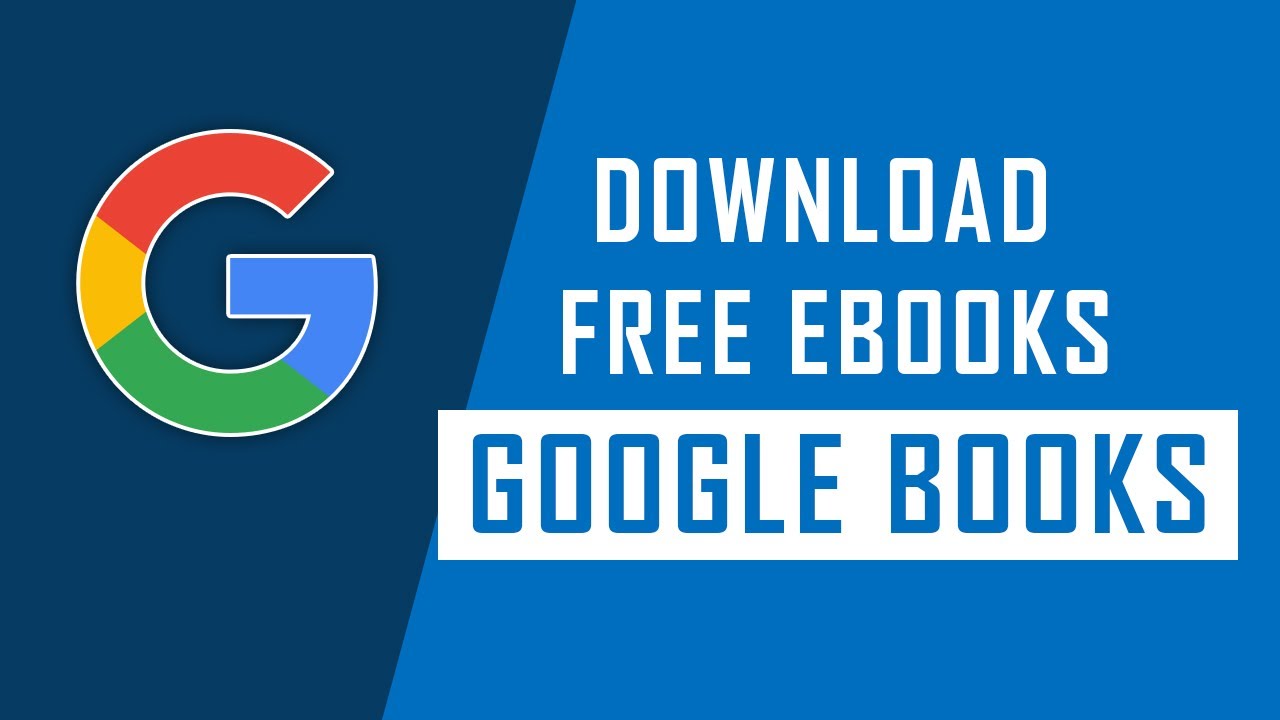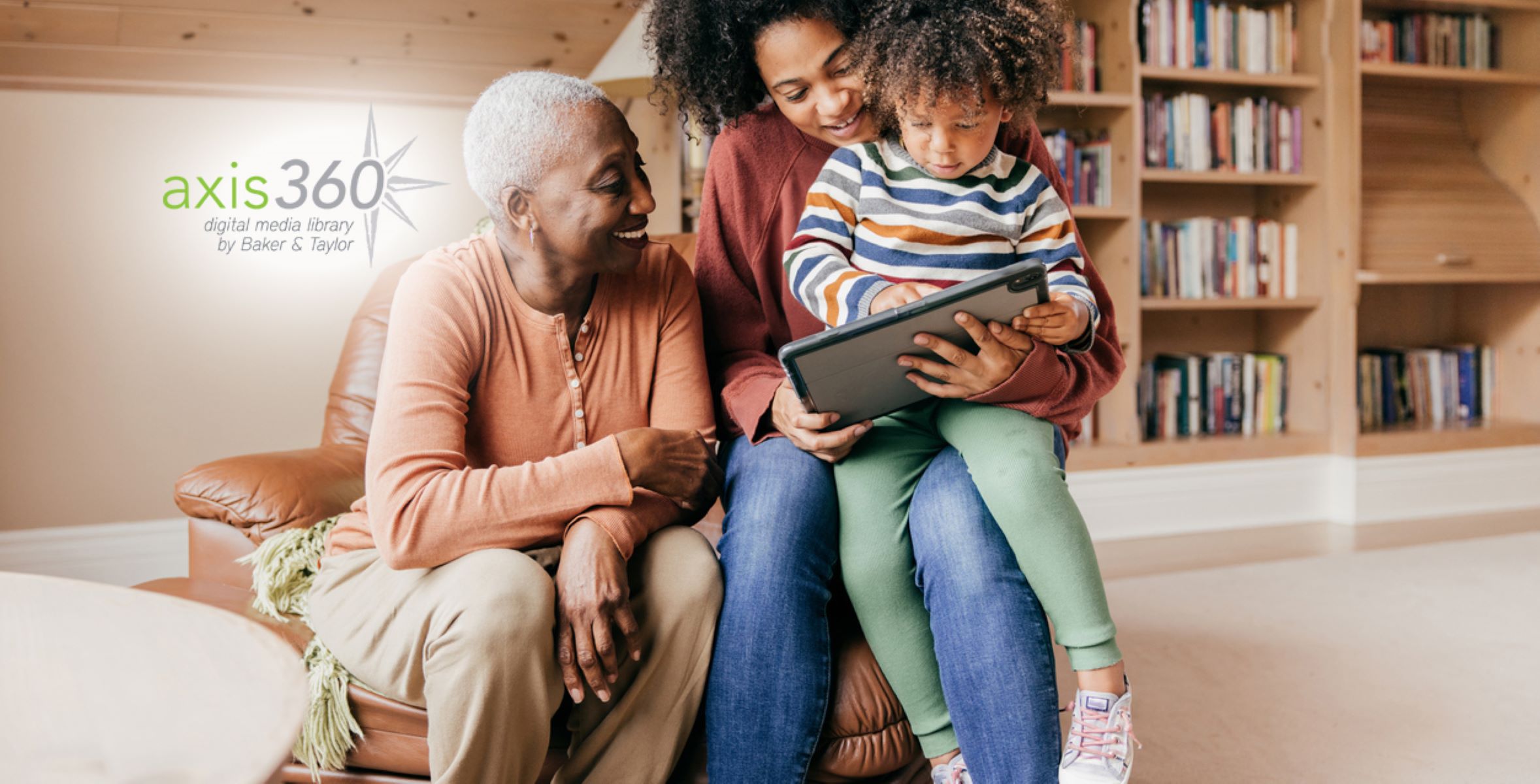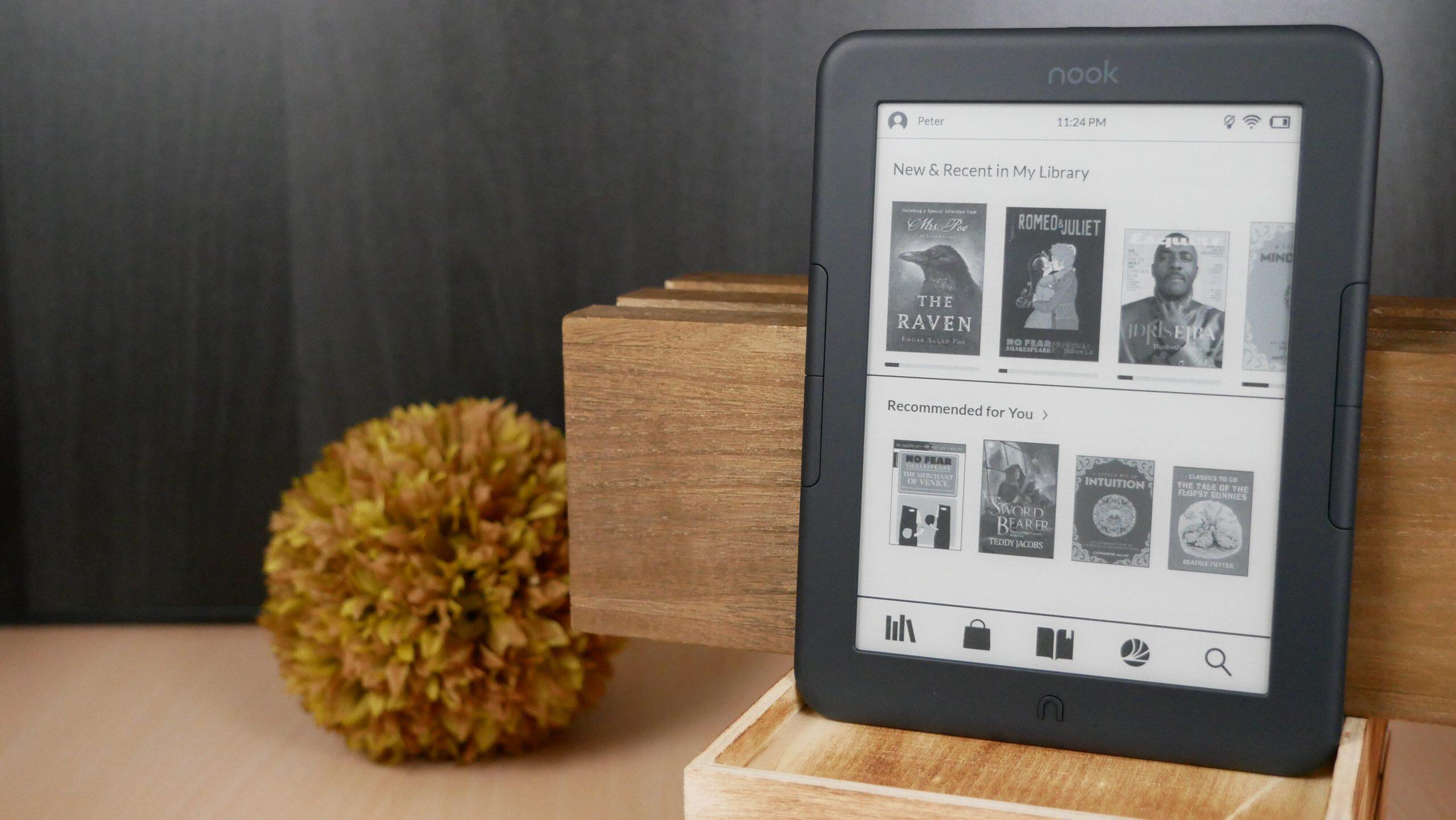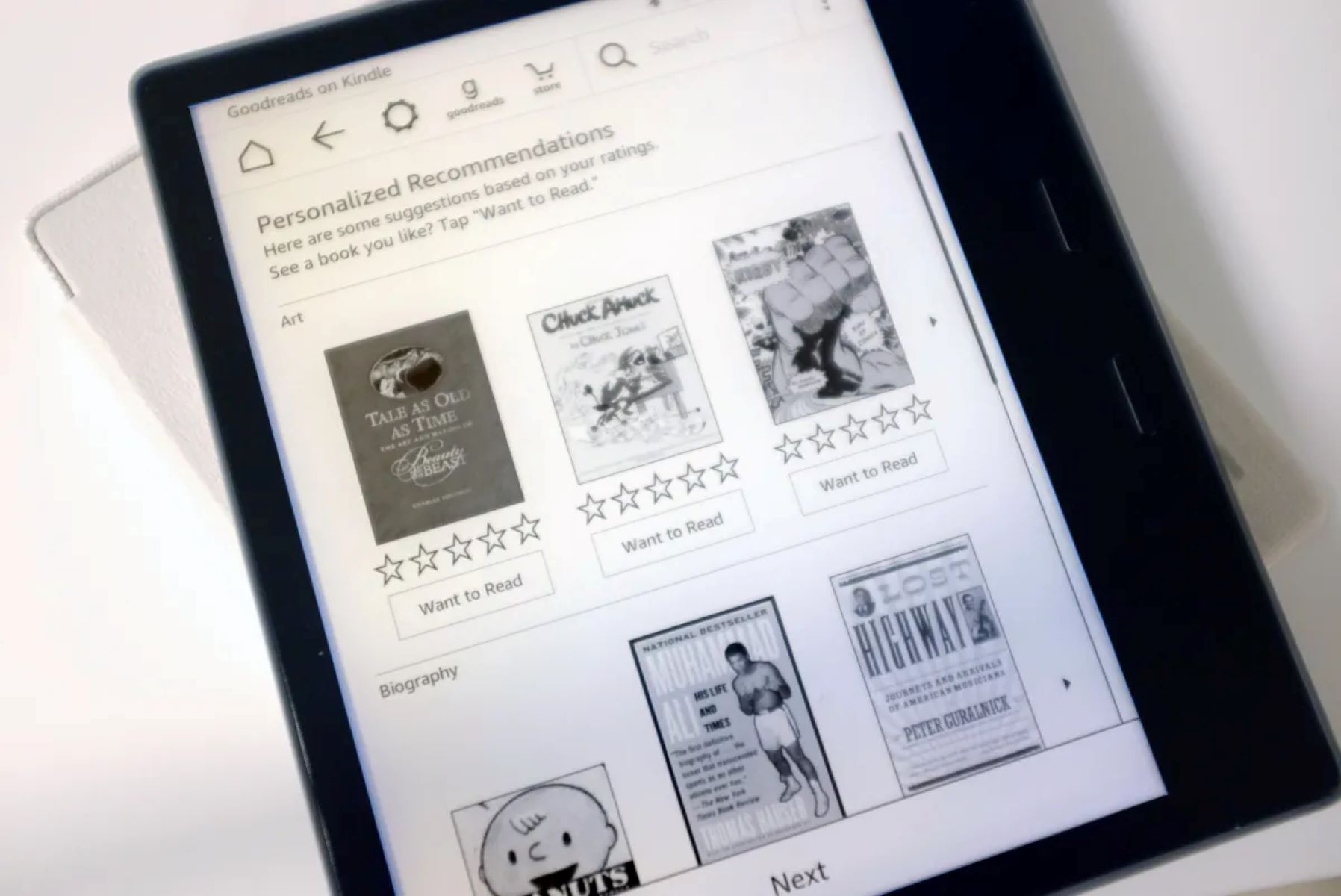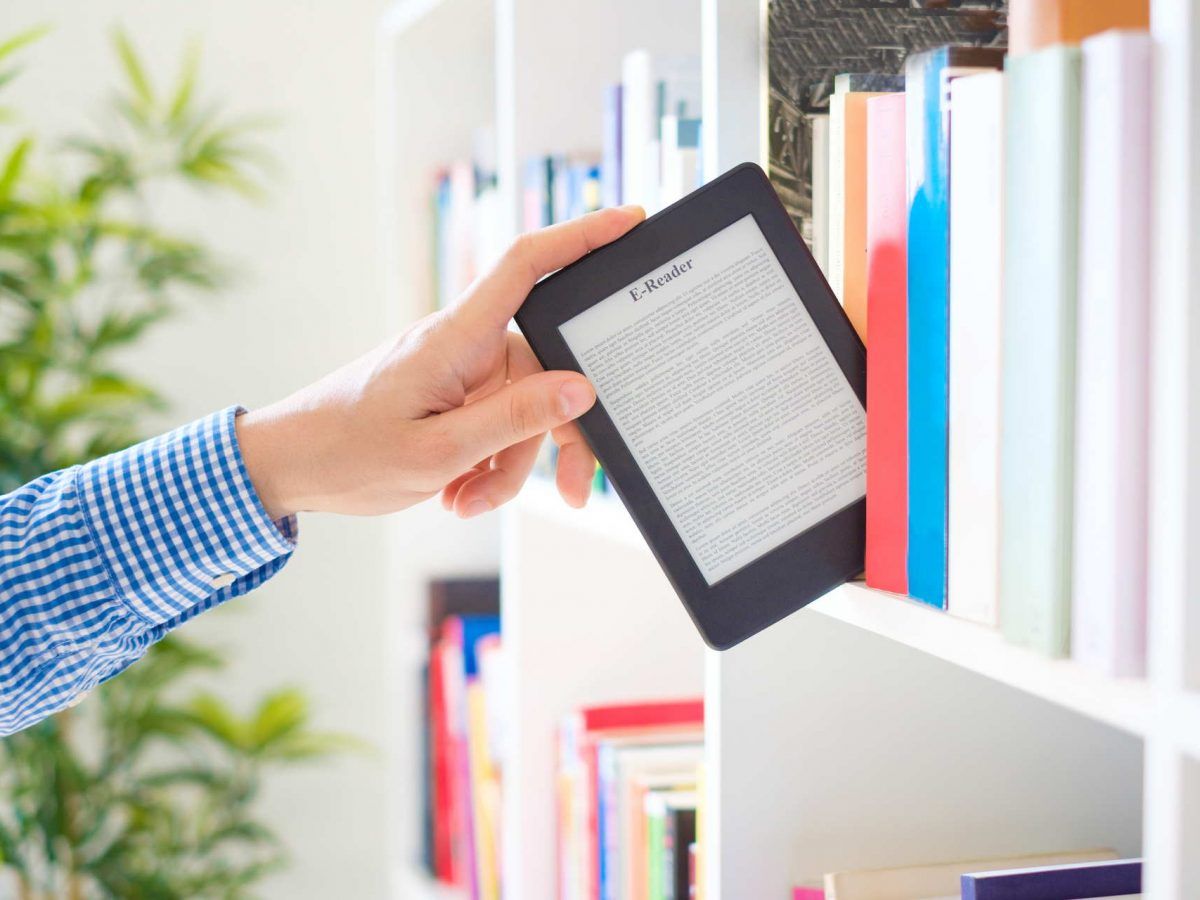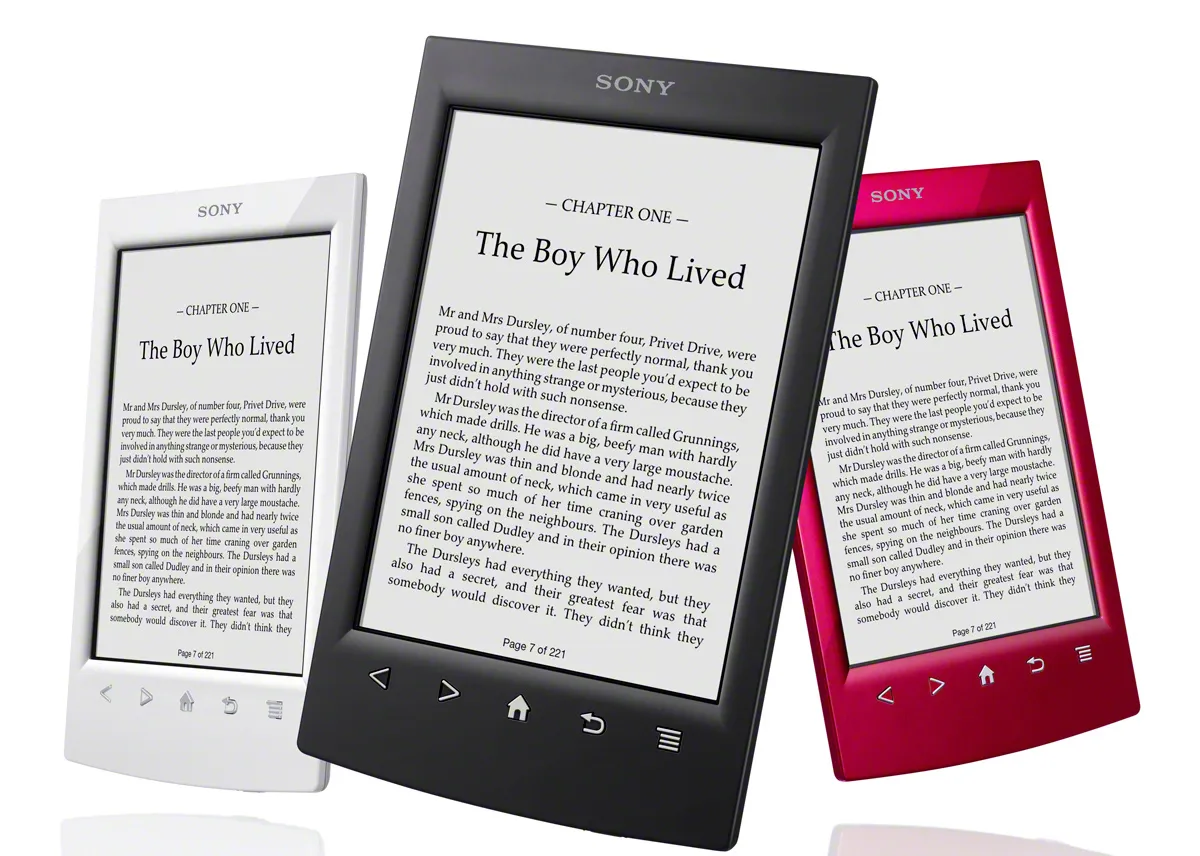Introduction
Welcome to the fascinating world of eBooks at the library! With the advancements in technology, libraries have embraced the digital era, making it easier than ever to access a wide range of books in a digital format. If you’re curious about what an eBook is and how it works at the library, you’ve come to the right place.
An eBook, short for “electronic book,” is essentially a digital version of a printed book that can be read on electronic devices such as e-readers, tablets, smartphones, or computers. Instead of flipping through physical pages, you can navigate through the content using the device’s screen and user-friendly interfaces.
So, how do eBooks work at the library? Well, libraries provide access to a vast collection of eBooks that you can borrow just like you would with traditional print materials. The main difference is that instead of physically visiting the library and checking out a book, you can do it all online from the comfort of your own home or anywhere with an internet connection.
There are numerous advantages to using eBooks at the library. First and foremost, they offer convenience. You can carry an entire library’s worth of books on a single device, eliminating the need to lug around heavy bags or worry about due dates and late fees. eBooks are also accessible 24/7, meaning you can borrow and read them whenever suits you best, without being restricted by library opening hours.
Furthermore, eBooks are customizable. You can adjust font sizes, change background colors, and even highlight or make notes within the text. This flexibility enhances the reading experience and allows you to personalize the content to your liking. Additionally, eBooks often offer features like built-in dictionaries and searching capabilities, making it easier to engage with the material and find specific information quickly.
Now that you’re familiar with the basics, let’s explore how you can access eBooks at the library. The process differs slightly depending on your library system, but in general, you’ll need a valid library card and an internet-enabled device to get started. Don’t worry if you don’t have a physical library nearby – many libraries now offer digital memberships, allowing you to access their virtual resources from anywhere in the world.
Next, let’s delve into the different types of eBooks that you can find at the library. From popular novels and non-fiction titles to educational materials and research resources, libraries offer a diverse range of eBooks to cater to various interests and needs. Whether you’re a fan of fiction, an avid learner, or simply looking for a good book to relax with, you’ll likely find an eBook that suits your preferences.
What is an eBook?
An eBook, short for “electronic book,” is a digital version of a printed book that can be read on electronic devices such as e-readers, tablets, smartphones, or computers. It provides the same content as a traditional book, but with the added convenience and flexibility of a digital format.
eBooks come in various file formats such as PDF, EPUB, MOBI, and more. These formats ensure compatibility with different reading devices and allow for easy distribution and sharing. With an eBook, you can access a vast library of literature, ranging from classics to contemporary titles, all at your fingertips.
One of the key advantages of eBooks is their portability. Instead of carrying around heavy physical books, you can store an entire library on a single device. This makes it easier for travelers, students, and avid readers to enjoy their favorite books without the extra weight. Additionally, eBooks are ideal for individuals with visual impairments or physical limitations, as they offer customization features like adjustable font sizes and screen brightness to accommodate different reading needs.
eBooks also offer benefits in terms of accessibility. With an internet connection, you can download eBooks from online platforms or borrow them from your local library’s digital collection. This eliminates the need to visit a physical library, allowing you to borrow and read books from the comfort of your own home or on the go.
Furthermore, eBooks provide additional features that enhance the reading experience. Many eBook readers offer options to highlight text, take notes, and bookmark pages, making it easy to revisit favorite passages or references. Some readers also include built-in dictionaries, allowing you to look up unfamiliar words without leaving the reading interface.
While many people associate eBooks with novels and fiction, they extend far beyond that. eBooks cover a wide range of genres and categories, including educational textbooks, academic research papers, technical manuals, and self-help guides. This versatility makes eBooks an invaluable resource for students, professionals, and lifelong learners.
It’s important to note that while eBooks provide many advantages, they may not completely replace physical books for everyone. Some individuals still prefer the tangible experience of holding a book and flipping through its pages. Others may enjoy the aesthetics of a bookshelf filled with their favorite titles. Ultimately, the choice between eBooks and physical books depends on personal preference and individual reading habits.
In summary, an eBook is a digital version of a printed book that offers convenience, portability, and accessibility. It provides a wide variety of literature in various formats, accommodating different reading preferences and needs. Whether you’re a book enthusiast, a scholar, or simply enjoy exploring new stories, eBooks offer a modern and convenient way to access and enjoy the world of literature.
How do eBooks work at the library?
eBooks have revolutionized the way we borrow and read books from the library. Instead of physically visiting the library and checking out a physical copy, you can now access and borrow eBooks digitally. Here’s how the process typically works:
Firstly, you’ll need a valid library card to access the library’s digital collection. If you don’t have one, you can usually sign up for a library card online or visit your local library to register. Once you have a library card, you can log into the library’s website or use their mobile app to access their eBook platform.
Next, navigate to the eBook section of the library’s website or app. This is where you’ll find the digital collection available for borrowing. Libraries typically offer a wide range of titles, including bestsellers, classics, non-fiction, and more.
When you find an eBook you’re interested in, click on it to view more details, such as the book’s summary, author information, and availability. Most libraries have limited copies of each eBook, just like with physical books, so you may find that a popular title is currently checked out by other users. In that case, you can join a waitlist and be notified when the eBook becomes available.
If the eBook is available, you can choose to borrow it immediately by clicking on the “Borrow” or “Checkout” button. The borrowing period typically ranges from a few days to a few weeks, depending on your library’s policy. During the borrowing period, you can read the eBook on your preferred device without any interruptions.
Once the borrowing period expires, the eBook will be automatically returned to the library’s digital collection, making it available for other users to borrow. However, some eBook platforms also offer the option to return the eBook early if you finish reading it before the due date.
It’s important to note that just like physical books, eBooks may have different borrowing restrictions. Some eBooks may allow multiple users to borrow them simultaneously, similar to an unlimited number of copies, while others may limit the number of borrowers to a set number. This aspect can affect the availability of popular titles, so it’s always a good idea to check if there are any restrictions in place.
Technical decisions on accessing eBooks can vary depending on the library and the platform they use. Some libraries provide access to eBooks directly through their website, while others partner with third-party platforms or applications. Make sure to follow your library’s instructions and recommendations to ensure a smooth borrowing experience.
In summary, borrowing eBooks from the library involves having a library card, accessing the library’s digital collection, selecting and borrowing available eBooks, and returning them at the end of the borrowing period. It’s a convenient and accessible way to enjoy a wide range of titles without the need to physically visit the library.
Advantages of using eBooks at the library
eBooks offer a plethora of advantages when it comes to reading books from the library. Here are some of the key benefits:
1. Convenience: One of the most significant advantages of using eBooks at the library is the convenience they offer. With just a few clicks, you can access a vast library of books from the comfort of your own home, eliminating the need to physically visit the library. Additionally, eBooks can be downloaded directly to your preferred device, allowing you to read them on the go without the hassle of carrying around physical books.
2. Accessibility: eBooks enhance accessibility for readers. They are compatible with various devices like e-readers, tablets, smartphones, and computers, making it easy for anyone to access and enjoy their favorite books. Additionally, eBooks often provide accessibility features such as adjustable font sizes, screen brightness settings, and audio options, catering to individuals with visual impairments or reading difficulties.
3. Portability: Carrying around physical books can be cumbersome, especially when you’re traveling or have limited space. With eBooks, you can have an entire library at your fingertips on a single device. This makes it convenient to take your favorite books wherever you go, without the added weight and bulk of traditional books.
4. Customization: eBooks allow for personalized reading experiences. Many eBook readers offer customizable features such as adjustable font sizes, font styles, and background colors. This flexibility makes it easier for readers to find a comfortable reading setting, especially for those with specific needs or preferences.
5. Multitasking: eBooks enable multitasking while reading. With digital bookmarks and note-taking features, you can easily mark important passages, highlight text, and make notes directly within the eBook. This can be particularly useful for students, researchers, or individuals who want to engage more deeply with the content.
6. Availability: eBooks are available 24/7, providing round-the-clock access to the library’s digital collection. Unlike physical books, which may have limited copies available, eBooks can be borrowed by multiple users simultaneously. This means you don’t have to wait for a popular title to become available or worry about late fees for returning overdue books.
7. Environmentally Friendly: Using eBooks reduces the environmental impact of printing and paper production. By opting for digital copies, you’re contributing to the conservation of resources and minimizing waste.
8. Cost-effective: Borrowing eBooks from the library can save you money. Instead of purchasing books individually, you can enjoy a wide range of titles at no cost with a valid library card. This is especially beneficial for avid readers who go through multiple books in a short period.
In summary, the advantages of using eBooks from the library include convenience, accessibility, portability, customization, multitasking capabilities, availability, environmental friendliness, and cost-effectiveness. These benefits make eBooks a popular choice for readers of all interests and preferences.
How to access eBooks at the library
Accessing eBooks at the library is a straightforward process that can be done from the comfort of your own home or anywhere with an internet connection. Here’s a step-by-step guide on how to access eBooks at the library:
1. Obtain a library card: If you don’t already have a library card, visit your local library or their website to sign up for a library card. Some libraries also offer digital memberships, allowing you to access their virtual resources without needing to visit a physical library.
2. Explore the library’s digital collection: Once you have a library card, visit the library’s website or download their mobile app. Look for the section dedicated to eBooks or digital materials. This is where you’ll find the library’s digital collection, which may include a wide range of titles and genres to choose from.
3. Choose an eBook platform: The library may have their own eBook platform, or they may partner with popular eBook providers such as OverDrive, Libby, or Hoopla. Some libraries also offer multiple platforms to cater to different user preferences. Explore the available options and select the eBook platform that suits your needs.
4. Login or register: Depending on the library and the eBook platform they use, you may need to log in using your library card information. If it’s your first time accessing the eBook platform, you may need to create an account by providing your library card number and other required details.
5. Browse and search for eBooks: Once logged in, you can start browsing the library’s eBook collection. You can search by title, author, genre, or explore curated lists and recommendations. Many platforms also provide filters to refine your search and help you find the right eBook for your interests.
6. Check availability and borrow: When you find an eBook you’re interested in, check its availability. If it’s available, you can click on the borrowing option to borrow the eBook. Some platforms may have a borrowing limit, so keep that in mind if you plan to borrow multiple eBooks at once.
7. Read the eBook: Once you’ve borrowed an eBook, you can start reading it immediately. Most eBook platforms offer options to read the eBook directly in the browser, or you can download the eBook to your device for offline reading. You may also have the option to customize the reading experience by adjusting font sizes, background colors, or using features like text highlighting and note-taking.
8. Return the eBook: eBooks borrowed from the library have a set borrowing period, usually ranging from a few days to a few weeks. Make sure to return the eBook before the due date to make it available for other users. Some eBook platforms may also allow you to return the eBook early if you finish reading it before the due date.
9. Explore more eBooks: Once you’ve returned an eBook or finished reading one, you can continue exploring the library’s digital collection for more eBooks to borrow. Many libraries constantly update their eBook collection, so there’s always something new to discover.
Now you’re equipped with the knowledge to access eBooks at the library. It’s an accessible and convenient way to enjoy a wide range of books, all at your fingertips. Start exploring the world of eBooks and discover the joy of reading in a digital format!
Types of eBooks available at the library
Libraries offer a diverse selection of eBooks to cater to various reading interests and preferences. From fiction to non-fiction, educational materials, and more, here are some of the types of eBooks you can find at the library:
- Fiction: Fiction eBooks encompass a wide range of genres, including romance, mystery, science fiction, fantasy, historical fiction, and literary fiction. Libraries often have a vast collection of popular novels and bestsellers in digital format, making it easy to access and enjoy your favorite fictional stories.
- Non-fiction: Non-fiction eBooks cover a broad spectrum of subjects. They include biographies, memoirs, self-help books, business and finance guides, history, science, technology, and more. Libraries provide access to educational and informative eBooks that cater to a wide range of interests and hobbies.
- Academic and research: Libraries also offer a collection of academic and research eBooks, ranging from scholarly publications to textbooks and research papers. These eBooks provide valuable resources for students, professionals, and researchers in various fields.
- Children’s and young adult: Libraries understand the importance of fostering a love for reading in young minds. They have an extensive collection of children’s eBooks, including picture books, early readers, middle-grade novels, and young adult fiction. These eBooks are specifically curated to engage and educate young readers.
- Self-help and personal development: If you’re interested in personal growth and self-improvement, libraries offer a selection of eBooks focused on self-help, motivation, mindfulness, and personal development. These eBooks provide insights, guidance, and practical tips for improving various aspects of life.
- Travel and exploration: If you’re planning a trip or simply love exploring different cultures and destinations, libraries often have eBooks dedicated to travel guides, travel memoirs, and books that highlight specific regions, countries, or cities. These eBooks can serve as valuable resources to enhance your travel experiences.
- Cookbooks and culinary: For food enthusiasts, libraries offer a variety of eBooks focusing on different cuisines, cooking techniques, recipes, and nutrition. These eBooks can inspire your culinary adventures and help you master new dishes in the kitchen.
- Art and photography: Libraries also have eBooks that showcase art, photography, and design. These eBooks feature stunning visuals, insights into artists and their works, and educational resources for aspiring artists and photographers.
- Language learning: For those interested in learning new languages or brushing up on language skills, libraries provide eBooks for language learning. These eBooks may include language textbooks, phrasebooks, grammar guides, and interactive language courses.
These are just a few examples of the types of eBooks available at the library. The diversity of digital titles ensures that there is something for everyone’s taste and interests. Whether you’re seeking entertainment, knowledge, personal growth, or academic resources, libraries have a vast collection of eBooks to satisfy your reading cravings.
Popular library platforms for accessing eBooks
When it comes to accessing eBooks at the library, there are several popular platforms that libraries utilize to provide their digital collections to patrons. These platforms offer user-friendly interfaces, a wide range of eBook titles, and various features to enhance the reading experience. Here are some of the popular library platforms for accessing eBooks:
- OverDrive: OverDrive is one of the most widely used eBook platforms among libraries. It provides access to a vast collection of eBooks, audiobooks, and other digital media. OverDrive offers a seamless borrowing experience and is compatible with a wide range of devices, including e-readers, tablets, smartphones, and computers.
- Libby: Libby is a user-friendly app developed by OverDrive that makes borrowing and reading eBooks even more convenient. With Libby, users can easily browse, borrow, and read eBooks with just a few taps on their mobile devices. The app offers features like customizable reading settings, syncing across multiple devices, and seamless integration with library accounts.
- Hoopla: Hoopla is another popular platform used by libraries that offers not only eBooks but also digital audiobooks, comics, music, and movies. Hoopla has a vast collection of content that can be accessed instantly, without any holds or waitlists. The platform is compatible with various devices and allows for offline downloading for convenient on-the-go access.
- Cloud Library: Cloud Library is a user-friendly eBook platform that provides access to a vast collection of eBooks and audiobooks. It offers features such as customizable reading settings, syncing across devices, and offline reading capabilities. The platform is compatible with popular devices like e-readers, tablets, smartphones, and computers.
- Axis 360: Axis 360 is a comprehensive platform that offers eBooks, audiobooks, and digital comics. It provides a user-friendly interface for browsing, borrowing, and reading digital content. Axis 360 is compatible with various devices and offers features like customizable reading settings and syncing across devices.
- Bibliotheca: Bibliotheca provides an integrated platform for libraries to manage and distribute their digital content, including eBooks and audiobooks. It offers a seamless borrowing experience and can be accessed on a variety of devices. Bibliotheca provides libraries with the tools necessary to curate and customize their digital collections.
These are just a few examples of popular library platforms used for accessing eBooks. It’s important to note that different libraries may partner with different platforms, so the availability and features may vary. To access eBooks from your library, check with your local library or visit their website to determine which platform they use and follow their instructions for accessing and borrowing eBooks.
Overall, these library platforms offer a user-friendly experience, a wide selection of eBooks, and various features that make borrowing and reading eBooks from the library a convenient and enjoyable experience.
Tips for finding and borrowing eBooks
Finding and borrowing eBooks from the library can be a straightforward process with a few handy tips. Whether you’re new to accessing eBooks or looking to improve your borrowing experience, here are some useful tips to help you find and borrow eBooks effectively:
- 1. Explore your library’s website: Start by visiting your library’s website and navigating to the section dedicated to eBooks or digital collections. Familiarize yourself with the layout and available search options. Check if they offer any guides or tutorials on how to access and borrow eBooks.
- 2. Use search filters: When browsing for eBooks, use search filters to narrow down your options. Filter by genre, author, language, or availability to find the eBooks that match your interests or are currently available for borrowing.
- 3. Check for recommendations and curated lists: Many library platforms feature recommended titles and curated lists created by librarians or fellow readers. These lists can help you discover new eBooks and popular titles in different genres.
- 4. Join waitlists: If an eBook you’re interested in is currently checked out, consider joining the waitlist. Libraries often notify users when the eBook becomes available, allowing you to borrow it once it’s returned by another user.
- 5. Check multiple platforms: Some libraries partner with more than one eBook platform. If an eBook you’re looking for isn’t available on one platform, check if it’s available on another platform that your library uses.
- 6. Utilize tags and keywords: When searching for specific topics or themes, make use of tags or keywords. These can help you narrow down the search results and find eBooks relevant to your interests.
- 7. Create wishlists: If you come across eBooks you’re interested in but not ready to borrow, consider creating wishlists on the eBook platform. This way, you can easily refer back to these eBooks when you’re ready to borrow and read them.
- 8. Read user reviews: Before borrowing an eBook, take some time to read user reviews and ratings. This can give you insights into the quality and appeal of the eBook, helping you make informed decisions.
- 9. Experiment with different genres: Step out of your comfort zone and explore different genres. Borrow eBooks in genres you haven’t explored before to discover new authors, perspectives, and storytelling styles.
- 10. Manage your borrowing: Keep track of the eBooks you’ve borrowed and their due dates. Most library platforms provide options to view your borrowing history and manage your borrowed eBooks. This will help you stay organized and return eBooks on time.
With these tips in mind, you’ll be better equipped to find and borrow eBooks that match your reading preferences. Remember to check your library’s website for any specific instructions or additional resources that can further enhance your eBook borrowing experience.
Troubleshooting common eBook issues at the library
While accessing eBooks at the library is generally a smooth process, you may occasionally encounter some common issues. Here are some troubleshooting tips to help you overcome common eBook issues:
- 1. Difficulty accessing the eBook platform: If you’re having trouble accessing the library’s eBook platform, ensure that you have a valid library card and the correct login credentials. Double-check that you’re visiting the correct website or using the appropriate app for accessing eBooks. If the issue persists, reach out to your library’s support team for assistance.
- 2. Compatibility issues with your device: Ensure that your device is compatible with the eBook format and the platform you’re using. Different eBook platforms may have different compatibility requirements. If an eBook isn’t opening or displaying correctly, try accessing it from a different device or ensure your device’s software is up to date. Some eBooks may require specific e-reader apps or software for optimal reading experience.
- 3. Limited availability of popular titles: Popular titles may have limited copies available for borrowing, leading to waitlists. If you encounter this issue, consider joining the waitlist or exploring similar titles while you wait. Libraries often provide recommended alternative titles that you may find equally enjoyable.
- 4. Missing pages or formatting issues: If you notice missing pages or formatting issues within an eBook, it may be a technical glitch. Try re-downloading or refreshing the eBook to see if the issue resolves. If the problem persists, report the issue to your library’s support team so they can investigate and rectify it.
- 5. Difficulty navigating the eBook: If you’re finding it difficult to navigate within the eBook, familiarize yourself with the available features and controls of your eBook reader. Most eBook readers have options to navigate through chapters, bookmark pages, and customize the reading experience. Explore the settings and user guide for your eBook reader to take full advantage of its features.
- 6. Trouble with borrowed eBooks: If you’re encountering issues with a borrowed eBook, such as being unable to open or access it, ensure that the borrowing period has not expired. Some eBooks may have restrictions on the number of devices they can be accessed from simultaneously. If you encounter repeated issues with borrowed eBooks, contact your library support team for guidance.
- 7. Slow or interrupted downloads: Slow or interrupted downloads can be frustrating. Ensure that you have a stable internet connection during the downloading process. If the issue persists, try downloading the eBook at a different time or from a different location with a stronger internet connection. If the problem continues, contact your library’s support team for assistance.
- 8. Difficulty returning eBooks: If you can’t find the option to return a borrowed eBook, check the settings or options menu within the eBook reader or app. Look for a “Return” or “Delete” option to return the eBook. If you still can’t find the option, contact your library’s support team for guidance.
If you encounter any other issues or have specific questions about accessing or using eBooks at the library, don’t hesitate to reach out to your library’s support team. They are there to assist you and ensure that you have a smooth and enjoyable eBook borrowing experience.
Conclusion
eBooks have transformed the way we access and enjoy books from the library. With the convenience of digital technology, readers can now easily browse, borrow, and read a vast collection of eBooks from the comfort of their own devices. Whether you’re looking for fiction, non-fiction, academic resources, or children’s books, libraries offer a wide range of eBooks to cater to diverse reading interests and preferences.
Accessing eBooks at the library is a straightforward process that involves obtaining a library card, exploring the library’s digital collection, and borrowing eBooks using popular platforms like OverDrive, Libby, or Hoopla. These platforms provide user-friendly interfaces, customizable reading options, and a variety of features to enhance the reading experience.
The advantages of using eBooks at the library are abundant. From the convenience of carrying a whole library on a single device to the accessibility features for individuals with visual impairments, eBooks offer flexibility and inclusivity in reading. eBooks are also environmentally friendly, cost-effective, and available 24/7 for borrowing.
While using eBooks is generally seamless, it’s important to be aware of common issues that may arise. Troubleshooting common eBook issues like accessing platforms, compatibility, availability, navigation, and borrowing problems can help ensure a smoother reading experience.
In conclusion, eBooks have opened up a world of possibilities for readers at the library. They provide convenience, accessibility, and a wealth of reading options in various genres. By following the tips for finding and borrowing eBooks and knowing how to troubleshoot common issues, you can maximize your eBook borrowing experience and enjoy the benefits of accessing a vast library of books right at your fingertips.







